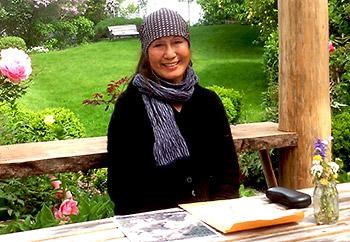Powell River Botanic Garden Society is anxiously awaiting a site closure plan to get underway on the City of Powell River’s former incinerator and waste transfer site.
Powell River Regional District’s solid waste management plan identifies the site as one of various former landfills in the city that must be properly closed down. It recently heard back from the provincial ministry of environment that testing can go ahead as a first step in closing the site.
If results are favourable, the society hopes to use phytoremediation to facilitate site cleanup and restoration.
Society president Diana Wood said the nature of the contamination and the layout of the site itself provides an opportunity to develop a garden and adjoining facility that is unique in Canada. An educational centre and facilities for cultural and heritage information may be developed. If successful the project would provide an opportunity to be on the leading edge of this emerging technology. “Plants and flowers and trees are good for the soul,” Wood said. “We want to provide a place of beauty and reflection for residents; a place of education and study for students and scientists; and a draw for visitors to Powell River.”
Dr. Val Schaefer, faculty coordinator of University of Victoria’s restoration of natural systems program, gave a bioremediation presentation at Vancouver Island University (VIU) Powell River campus in November 2012. Wood said that Schaefer’s presentation explained the science behind phytoremediation and bioremediation. It involves initiating natural processes using organisms like mushrooms and plants for restoration of contaminated sites. Schaefer identified also that this method would provide a cost-effective alternative to traditional restoration methods.
“It’s an approach that’s never been used here in BC,” Wood said. “The MOE itself confirmed that using bioremediation for a former incinerator site is uncommon, but that it has been developed successfully at other locations. It’s a proven approach. Rather than removing the contaminated earth and dumping it at another location where it will continue to be a problem, this remediation plan seeks to layer earth over the site and let the plants do the job in a natural way.”
Wood explained that the project could also provide opportunity for partnerships with local schools and post-secondary facilities to develop academic or educational programs for students both here and abroad.
“There could be opportunities to work with the ministry of forests and the Invasive [Species] Council of BC by providing a place to develop and test strategies to tackle invasive and noxious plants,” Wood said. “The garden could provide courses and workshops on permaculture, horticulture, take part in initiatives to expand local food production and increase local food security.”
In order to proceed with site reclamation, local government will require completion of current site condition information to decide what cleanup of the land will entail.
Colin Palmer, regional district board chair and Area C director, explained that incinerator ash testing identified a few areas with pollution levels high enough to fall within the “contaminants” range under provincial standards. “The consultant drilled the site, but there is no report yet. We’ve never done this before. It’s a new experience and process, so we are learning as we go, to ensure the best possible outcome.”
Al Radke, chief administrative officer for the regional district, said the district was given the task of putting together the site closure plan. “We’ve finally embarked on that process.”
A grant from Federation of Canadian Municipalities in the amount of $116,362, will help fund the project.
“The consultants have been tasked with some additional work in preparing the closure plan,” Radke explained. “We need to identify exactly what is existing in the ground and identify all of the potential opportunities and avenues for getting rid of and remediating the waste. I’m familiar with phytoremediation. It is legitimate. The problem is you have to understand the content of the soil in order to know whether the plants are going to be effective.”



